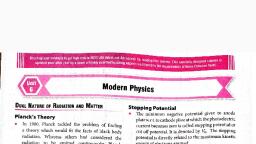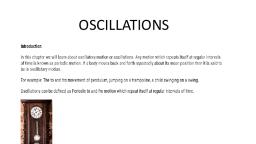Question 1 :
If the number of molecules in a gas is N then the number of molecules moving in negative X-direction will be :
Question 4 :
If the value of R = 2/5 C$_v$ for a gas, then the atomicity of the gas will be:
Question 5 :
<p class="wysiwyg-text-align-left">A gas at temperature 27$^{0}$C and pressure 30 atmospheres is allowed to expand to one atmospheric pressure. If the volume becomes 10 times its initial volumes, the final temperature becomes :<br/></p>
Question 6 :
$3$ moles of mono-atomic gas ($\gamma=5/3$) is mixed with $1$ mole of a diatomic gas ($\gamma=7/3$). The value of $\gamma$ for the mixture will be
Question 7 :
One mole of a monoatomic gas is mixed with 3 mole of a diatomic gas. The molar heat capacity at constant volume of mixture (in cal) is :
Question 8 :
Pressure depends on distance as $P = \dfrac{\alpha}{\beta} exp (- \dfrac{\alpha z}{k \theta})$, where $\alpha, \beta$ are constants, z is distance, k is Boltzmann's constant, and $\theta$ is temperature. The dimensions of $\beta$ are
Question 9 :
An iron rocket fragment initially at $-100^o$C enters the earth's atmosphere almost horizontally and quickly fuses completely in atmospheric fiction. Specific heat of iron is 0.11 kcal/kg$^o$C its melting point is $1535^o$C and the latent heat of fusion is 3 kcals/kg. The minimum velocity with which the fragment must have entered the atmosphere is
Question 10 :
The de-Broglie wavelength of a particle accelerated with $150\ volt$ potential is $10^{-10}\ m$. If it accelerated by $600\ volts$ p.d. its wavelength will be
Question 11 :
Internal energy of $n_{1}$ moles of hydrogen at temperature $150\ K$ is equal to the internal energy of $n_{2}$ moles of helium at temperature $300\ K$. The ratio of $n_{1}/n_{2}$ is
Question 12 :
<p class="wysiwyg-text-align-left">A barometer reads 75 cm of mercury. When 2.0cm$^{3}$ of air at atmospheric pressure is introduced into space above the mercury level, the volume of the space becomes 50cm$^{3}$. The length by which the mercury column descends is</p>
Question 13 :
At what temperature the average translational KE of the molecules of a gas will become equal to the KE of an electron accelerated from rest through 1 V potential difference?
Question 14 :
The internal energy of air in a room of volume 50 m$^3$ at atmospheric pressure will be
Question 15 :
Assertion: Mean free path of a gas molecules varies inversely as density of the gas.
Reason: Mean free path varies inversely as pressure of the gas.
Question 16 :
<p class="wysiwyg-text-align-left">A closed vessel contains a mixture of two gases Neon & Argon the total mass of mixture is 28 gm.The partial pressure due to Argon and neon are 4atm and 12atm respectively.The mass of individual gases in vessel is$(M_{neon}=20,M_{argon}=40,R=8.3J/mol-k)$</p>
Question 17 :
2 moles of an ideal gas A ($ {C}_{P} $ $= 4R$) and 4 moles of an ideal gas B ($ {C}_{V} $ $= \dfrac {3R}{2}$) are taken together in a container and allowed to expand reversibly and adiabatically from 49L to 64L, starting from an initial temperature of $ {47}^{0} $C. The final temperature of the gas is :
Question 18 :
A certain mass of an ideal gas undergoes a reversible isothermal compression. Its molecules, compared with the initial state, will then have the same<br/>(i) root mean square velocity<br/>(ii) mean momentum<br/>(iii) mean kinetic energy<br/>
Question 19 :
A vessel contains air and saturated vapor. The pressure of air is $\mathrm{p}_{2}$ and $\mathrm{p}_{1}$ is the S.V. P. On compressing the mixture to one-fourth of its original volume, what is the increase in pressure of the mixture?<br/>
Question 20 :
The kinetic energy of $ 1g $ molecule of a gas at normal temperature and pressure is :<br/>














































